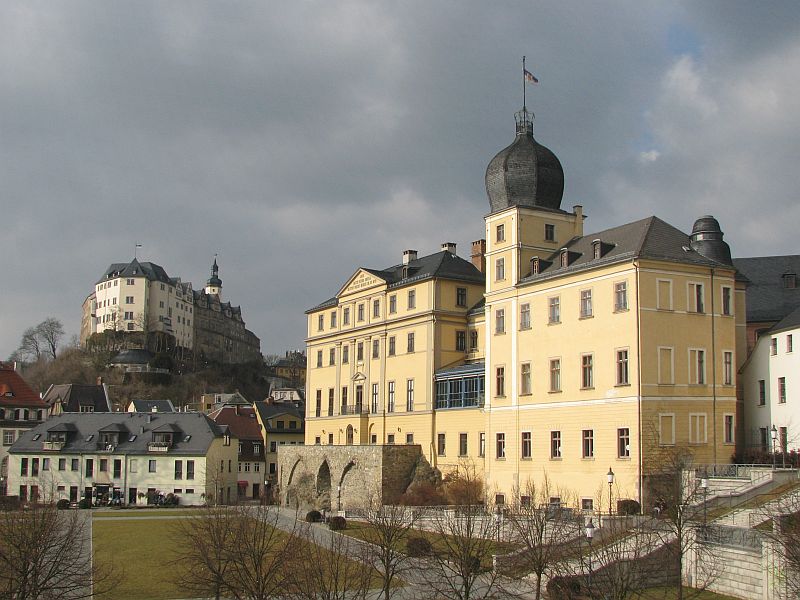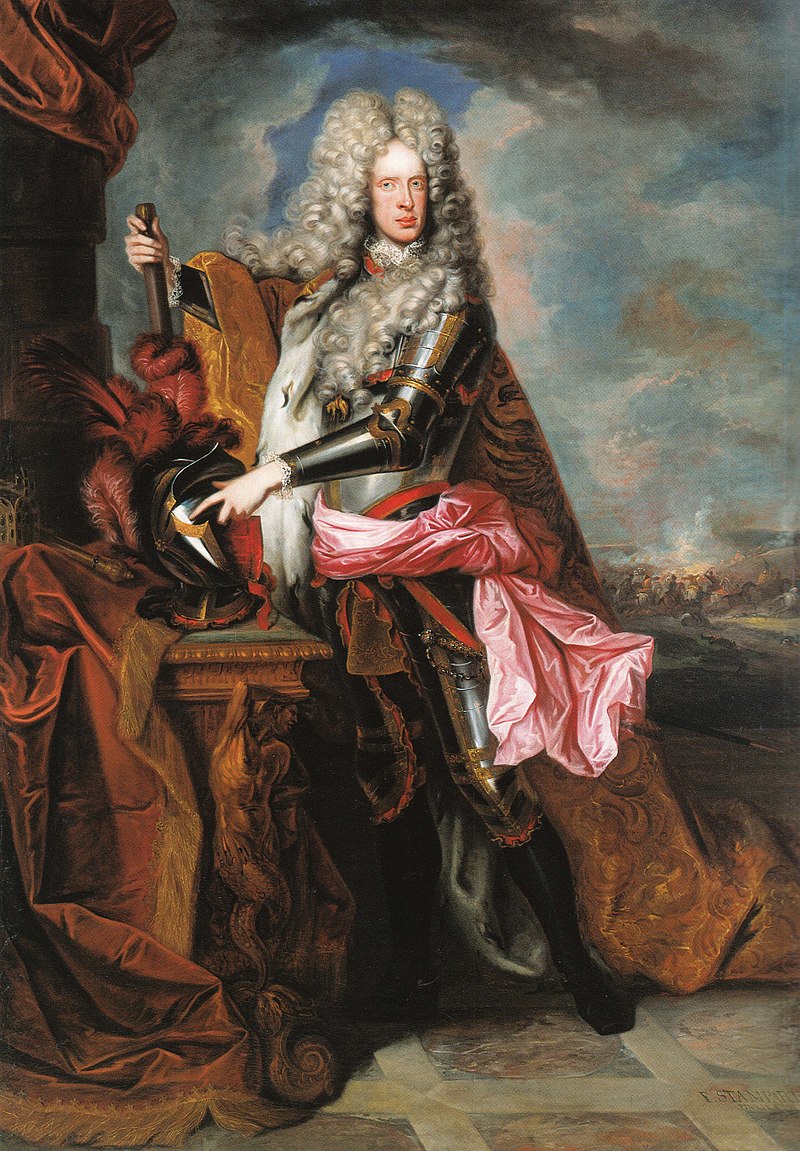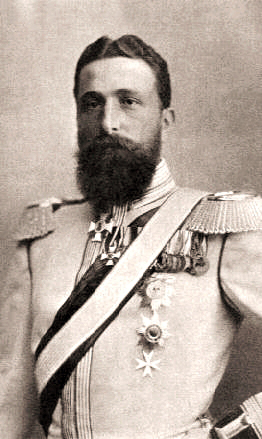© Unofficial Royalty 2023

Queen Marie of Romania; Credit – Wikipedia
October 29, 1816 – Birth of Prince Ferdinand of Saxe-Coburg-Gotha, King Consort of Portugal, husband of Queen Maria II of Portugal, in Vienna, Austria
Full name: Ferdinand August Franz Anton
Ferdinand was the son of Prince Ferdinand of Saxe-Coburg and Gotha and Princess Maria Antonia Koháry de Csábrág. He was a first cousin of Queen Victoria of the United Kingdom and her husband Prince Albert, as well as Leopold II, King of the Belgians and Empress Carlota of Mexico, born Princess Charlotte of Belgium. In 1836, Ferdinand married Queen Maria II of Portugal and they had eleven children. In keeping with tradition, Ferdinand was elevated to King Consort following the birth of their eldest son, the future King Pedro V. In 1853, Queen Maria II died after giving birth to their last child. Ferdinand served as Regent for his eldest son King Pedro V until he became of age. In 1869, Ferdinand married again to Elise Hensler, a Swiss-born American actress. The couple had no children.
Unofficial Royalty: Ferdinand of Saxe-Coburg and Gotha, King Consort of Portugal
October 29, 1873 – Death of King Johann of Saxony at Pillnitz Castle in Dresden, Kingdom of Saxony, now in Saxony, Germany; buried in the Wettin Crypt at the Dresden Cathedral
In 1822, Johann married Princess Amalie Auguste of Bavaria. They had nine children including two kings of Saxony. Johann became King of Saxony upon the death of his childless brother King Friedrich August II in 1854. His reign saw much progress within Saxony, including the extension of the railroad network, the introduction of free trade – including a commercial treaty with France – and the establishment of the Judiciary Organization. Under King Johann’s oversight, Saxony became one of the most modern and progressive of the German states. Johann died at the age of 72.
Unofficial Royalty: King Johann of Saxony
October 29, 1875 – Birth of Marie of Edinburgh, Queen of Romania, granddaughter of Queen Victoria, at Eastwell Park in Kent, England
Full name: Marie Alexandra Victoria
Marie was the daughter of Prince Alfred, Duke of Edinburgh and Saxe-Coburg and Gotha and Grand Duchess Maria Alexandrovna of Russia. She had always been very close with her cousin, the future King George V of the United Kingdom, and the two considered marriage. While Queen Victoria and both of their fathers were very supportive of the match, their mothers were not. Instead, in 1893, Marie married the Crown Prince of Romania. Born Prince Ferdinand of Hohenzollern-Sigmaringen, he was the heir-presumptive to his uncle, King Carol I of Romania. The couple officially had six children. The two youngest children are believed to have been fathered by Marie’s lover but were formally acknowledged by Ferdinand as his own.
Unofficial Royalty: Princess Marie of Edinburgh, Queen of Romania
October 29, 1900 – Death of Prince Christian Victor of Schleswig-Holstein, a grandson of Queen Victoria, in Pretoria, South African Republic, also known as the Transvaal Republic, now in South Africa, during the Boer War; buried in the Pretoria Cemetery, now in South Africa
Christian was the son of Princess Helena of the United Kingdom and Prince Christian of Schleswig-Holstein. In 1888, Christian joined the British Army reaching the rank of Major. In 1899, Christian began duty in the Boer War fought between the British Empire and the two Boer Republics. At the age of 33, Christian died of enteric fever during the Boer War in South Africa, having fallen ill with malaria. Although preparations were made to return his body to the United Kingdom, he was buried in a soldier’s grave in Pretoria, now in South Africa, at the wishes of his grandmother Queen Victoria.
Unofficial Royalty: Prince Christian Victor of Schleswig-Holstein
October 29, 1934 – Birth of Richard, 6th Prince of Sayn-Wittgenstein-Berleburg, husband of Princess Benedikte of Denmark, in Giessen, Germany
Full name: Richard Casimir Karl August Robert Konstantin
Richard, 6th Prince of Sayn-Wittgenstein-Berleburg was the husband of Princess Benedikte of Denmark. In 1919, Germany stopped recognizing the various titles of the nobility and royalty. However, in Germany today former hereditary titles are allowed only as part of the surname. Richard and Benedikte were married in 1968 and they had three children. Richard was active in a number of conservation programs including a project to reintroduce European bison on his 30,000-acre estate. Prince Richard died at his home, Berleburg Castle, in Bad Berleburg, North Rhine-Westphalia, Germany on March 13, 2017, at the age of 82.
Unofficial Royalty: Richard, 6th Prince of Sayn-Wittgenstein-Berleburg
October 29, 1950 – Death of King Gustav V of Sweden at Drottningholm Palace in Drottningholm, Sweden; buried at Riddarholmen Church in Stockholm, Sweden
Gustav was the eldest of four sons of King Oscar II of Sweden and Norway and Sophia of Nassau. In 1881, he married Princess Viktoria of Baden and they had three sons. In 1907, Gustaf became King of Sweden upon his father’s death. During World War I and World War II, both of which occurred during his 43-year reign, Sweden remained neutral. In 1948, King Gustaf celebrated his 90th birthday, but soon his health began to decline. Already spending the spring months on the French Riviera, he began to have his son the Crown Prince, the future King Gustaf VI Adolf, represent him at official functions. He made his last official appearance at a Cabinet meeting held on October 27, 1950. Two days later, as a result of complications from influenza at the age of 92.
Unofficial Royalty: King Gustav V of Sweden
October 29, 2004 – Death of Princess Alice, Dowager Duchess of Gloucester at Kensington Palace in London, England; buried in the Royal Burial Ground, Frogmore in Windsor, England
Alice was the widow of King George V’s son Prince Henry, Duke of Gloucester, aunt of Queen Elizabeth II, and mother of Prince Richard, the current Duke of Gloucester. She was born Lady Alice Christabel Montagu Douglas Scott, the daughter of John Montagu Douglas Scott, 7th Duke of Buccleuch and 9th Duke of Queensberry and Lady Margaret Bridgeman. In 1935, Alice married Prince Henry, Duke of Gloucester and the couple had two sons. During the early reign of Henry’s niece Queen Elizabeth II, the Duke and Duchess of Gloucester carried out royal engagements including some overseas tours. Princess Alice died peacefully in her sleep at Kensington Palace in London at the age of 102, the longest-lived member of the British Royal Family so far.
Unofficial Royalty: Princess Alice, Duchess of Gloucester
This article is the intellectual property of Unofficial Royalty and is NOT TO BE COPIED, EDITED, OR POSTED IN ANY FORM ON ANOTHER WEBSITE under any circumstances. It is permissible to use a link that directs to Unofficial Royalty.

















